Capsizes happen. Even in the calmest conditions. Even if you're a master of paddling strokes. This article assumes you've mastered the wet exit. Now you need to learn the role of both the swimmer and the rescuer to get things right again. To perform a "T-rescue" or a "buddy rescue" in a kayak, follow these steps:
- Swimmer alerts rescuer about the capsize. (Tip: Whack the boat during your wet exit.)
- Rescuer paddles to the front of the capsized boat, forming a "T."
- The pair work together to slide swimmer's boat onto rescuer's boat deck.
- They flip swimmer's boat and reorient boats bow-to-stern.
- Rescuer leans in, grabs and stabilizes the side-by-side boats.
- Swimmer kicks out of the water and belly flops onto the rear boat deck facing the stern.
- Former swimmer slides legs into cockpit and rotates to a sitting position.
- Former swimmer pumps out remaining water, attaches spray skirt and the duo paddles off into the sunset.
It's wise to learn both the wet exit and the T-rescue from an experienced guide or instructor, and to practice it in a calm, safe environment until it's second nature.
Video: How to T-Rescue
First Steps After Capsizing
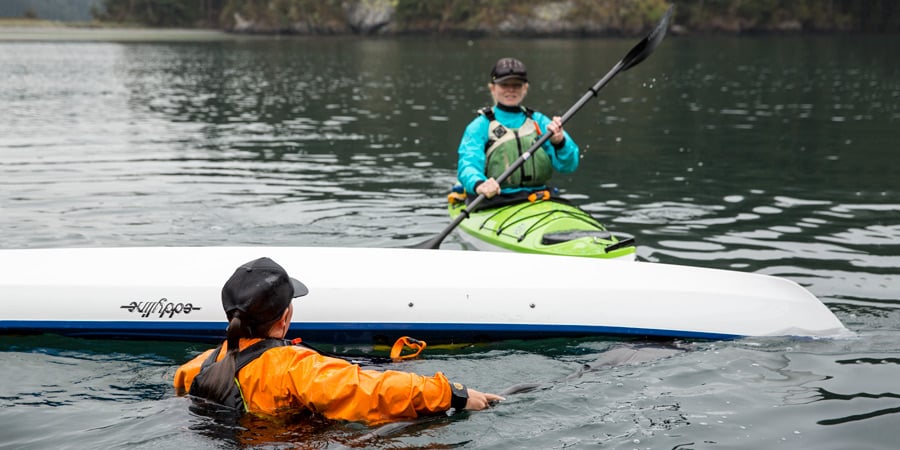
Once the last-ditch brace stroke has failed, both kayakers should take a deep, calming breath, then follow these steps:
- The swimmer performs a wet exit.
- The rescuer paddles toward the front of the overturned boat.
- The rescuer positions their boat perpendicular to the bow of the capsized boat (crossing the "T").
Righting the Capsized Kayak
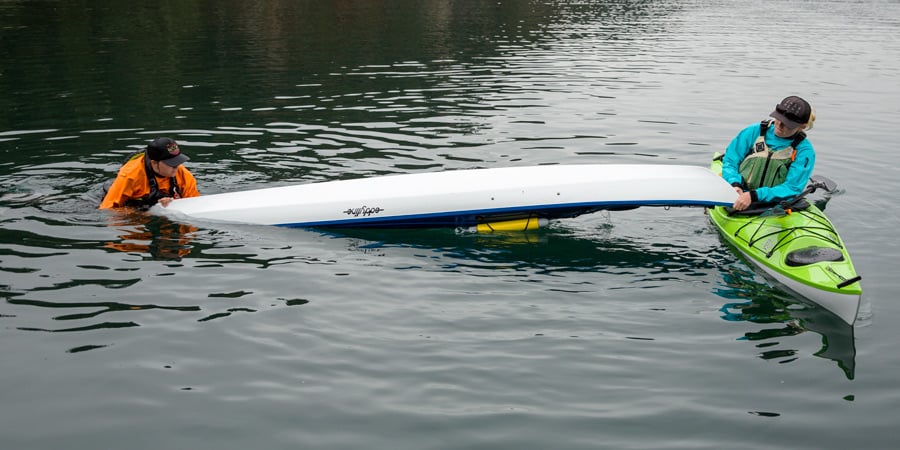
The goal is to get the water out of the overturned kayak and to get it upright again:
- The swimmer swims to the back of the overturned boat.
- The swimmer pops up while also pushing down hard on the back of the overturned boat.
- The rescuer simultaneously lifts and slides the bow of the capsized boat.
- The rescuer sets that bow down on top of their boat, immediately in front of them.
- The duo slides the overturned boat so the cockpit is near the hull of the other boat, then rocks the overturned boat back and forth to empty water from the cockpit.
- The duo then rights the capsized boat and sets it back on the water.
Repositioning the Kayaks
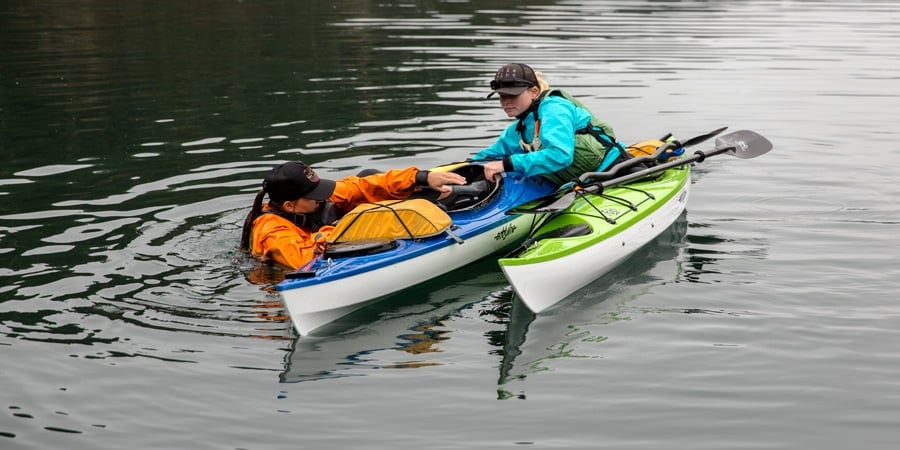
The goal is to create a stable platform for both the swimmer and the rescuer:
- The rescuer repositions their boat so it's parallel to the righted boat. Rescuer's bow, though, should be next to the righted boat's stern.
- Rescuer takes swimmer's paddle and places it on the boat decks. (If it falls between the boats, it will be easy to retrieve later.)
- To stabilize things, the rescuer leans in and grabs the back of the cockpit coaming and the static deck lines on the far side of the upright boat, leaving the cockpit clear for the swimmer to re-enter.
- The rescuer maintains a firm grip on both boats (each leaning slightly inward).
"Reboating" the Swimmer
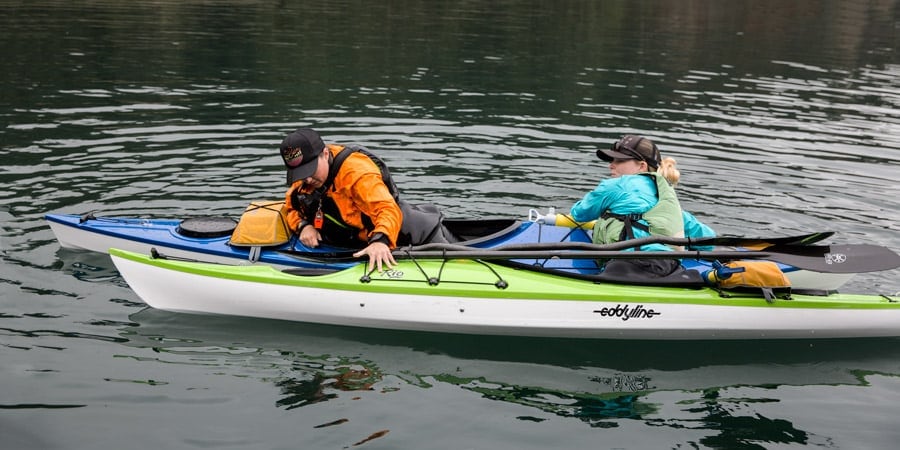
The goal is for the swimmer to pop out of the water and get back into the cockpit again:
- Swimmer grabs the static deck lines on the far side of the cockpit. If deck lines are too far to reach (or not there), then swimmer can grab the coaming on the far side of the cockpit.
- Swimmer kicks hard to push out of the water to belly flop onto the boat (facing the stern). A dolphin kick—with both legs together—works best.
- Using both boats and staying as low as possible for balance, the swimmer lifts legs out of the water, slides them backward into the cockpit, then carefully turns around and sits upright.
- Rescuer releases the boat and the former swimmer uses a bilge pump or sponge to remove excess water.
- The former swimmer reattaches the spray skirt, then receives their paddle from the rescuer and the paddling duo is good to go again.
Advanced Rescues
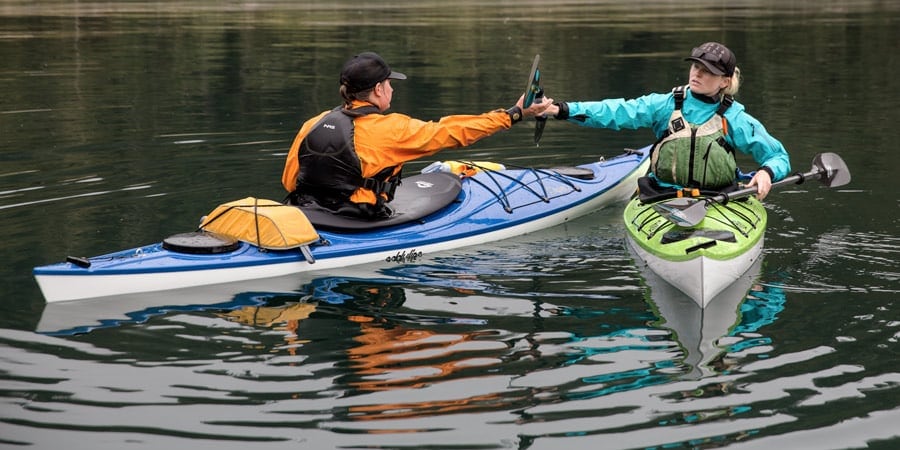
You no doubt noticed that the buddy rescue requires you to paddle with a friend, which is strongly recommended. Other rescues include the self rescue (using a paddle float) and the roll. Your best way to learn all of these, of course, is with proper instruction. See if an REI store in your area has a class. You can also check with other kayak specialty shops or kayaking clubs in your area.

